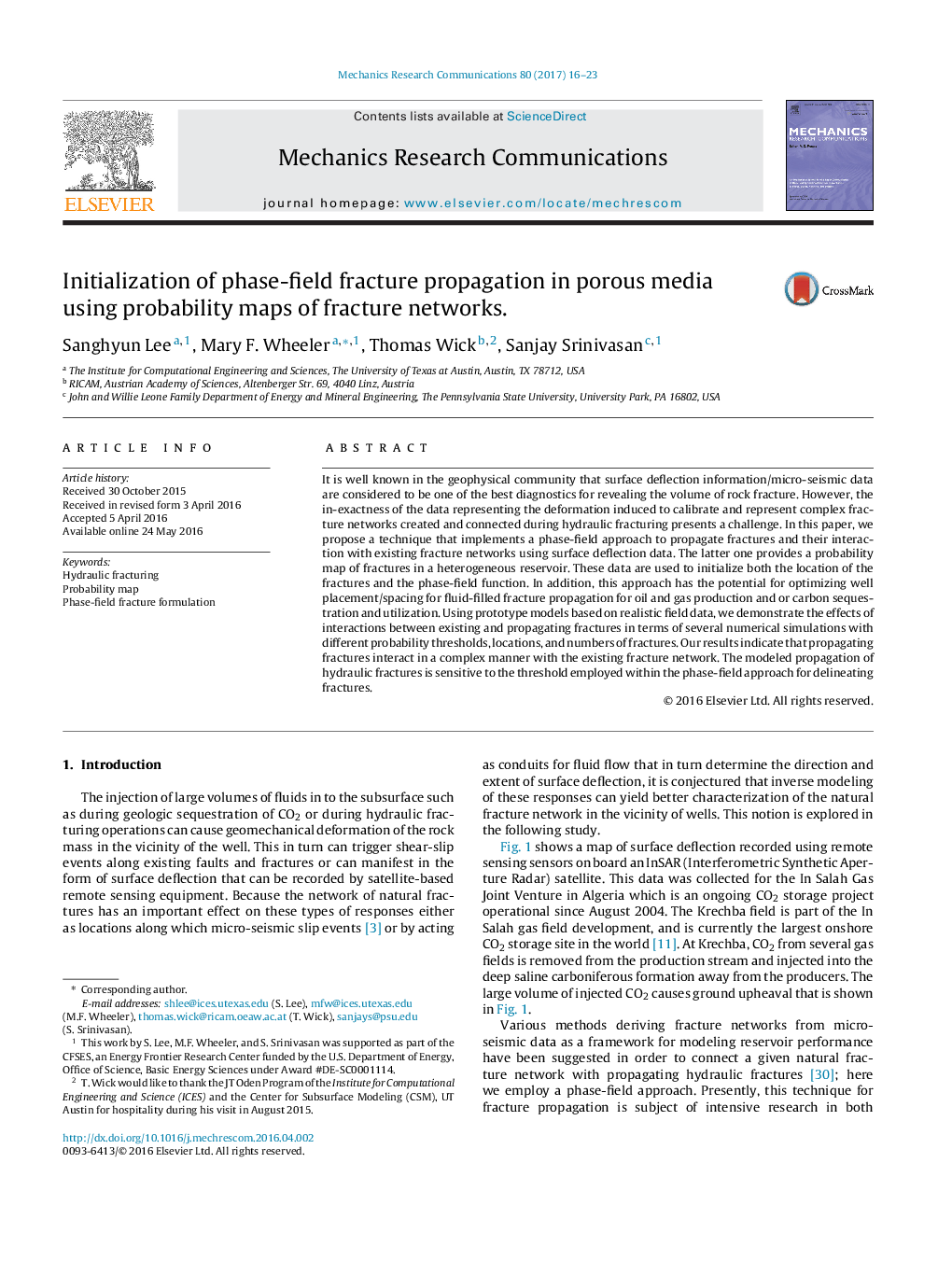| Article ID | Journal | Published Year | Pages | File Type |
|---|---|---|---|---|
| 5018662 | Mechanics Research Communications | 2017 | 8 Pages |
â¢Obtaining existing fracture networks by surface deflection data.â¢Initializing both the location of natural fractures and the phase-field function.â¢Interaction between existing and propagating fractures.
It is well known in the geophysical community that surface deflection information/micro-seismic data are considered to be one of the best diagnostics for revealing the volume of rock fracture. However, the in-exactness of the data representing the deformation induced to calibrate and represent complex fracture networks created and connected during hydraulic fracturing presents a challenge. In this paper, we propose a technique that implements a phase-field approach to propagate fractures and their interaction with existing fracture networks using surface deflection data. The latter one provides a probability map of fractures in a heterogeneous reservoir. These data are used to initialize both the location of the fractures and the phase-field function. In addition, this approach has the potential for optimizing well placement/spacing for fluid-filled fracture propagation for oil and gas production and or carbon sequestration and utilization. Using prototype models based on realistic field data, we demonstrate the effects of interactions between existing and propagating fractures in terms of several numerical simulations with different probability thresholds, locations, and numbers of fractures. Our results indicate that propagating fractures interact in a complex manner with the existing fracture network. The modeled propagation of hydraulic fractures is sensitive to the threshold employed within the phase-field approach for delineating fractures.
